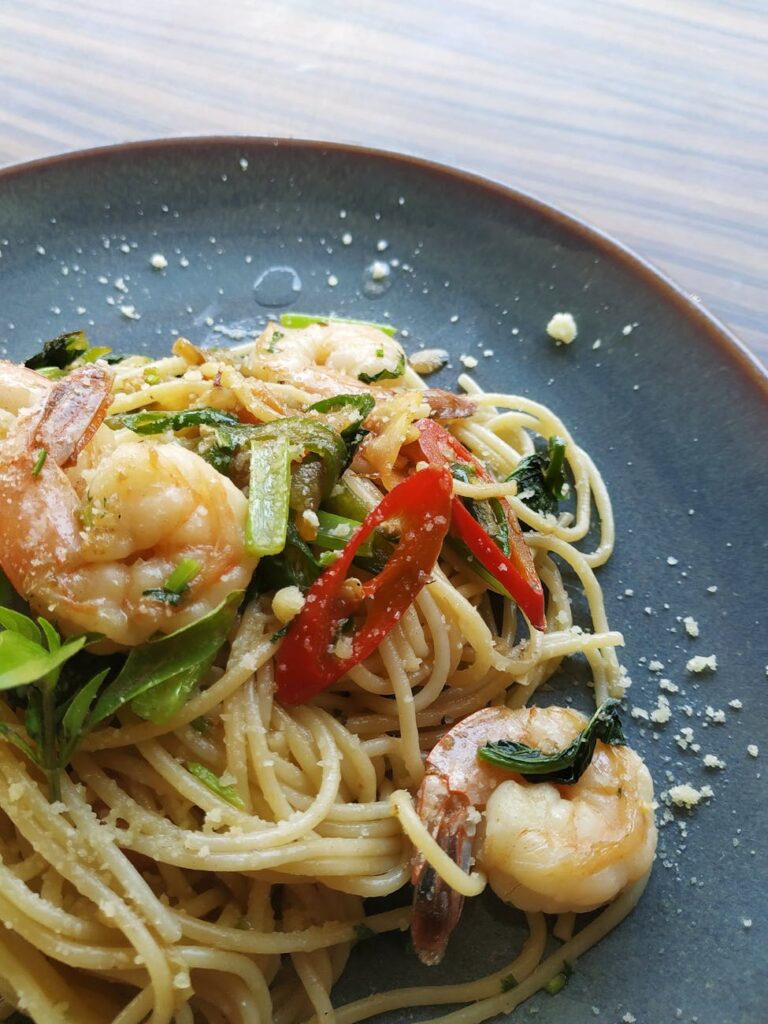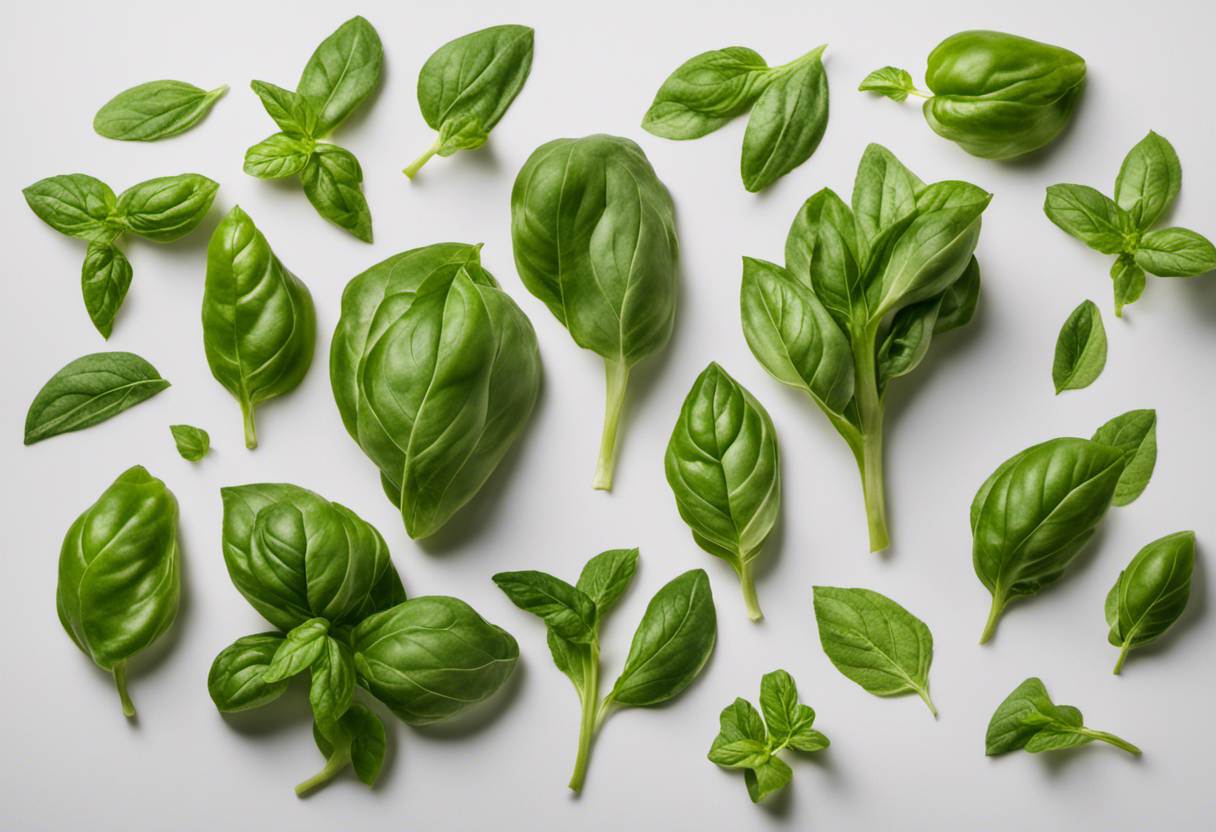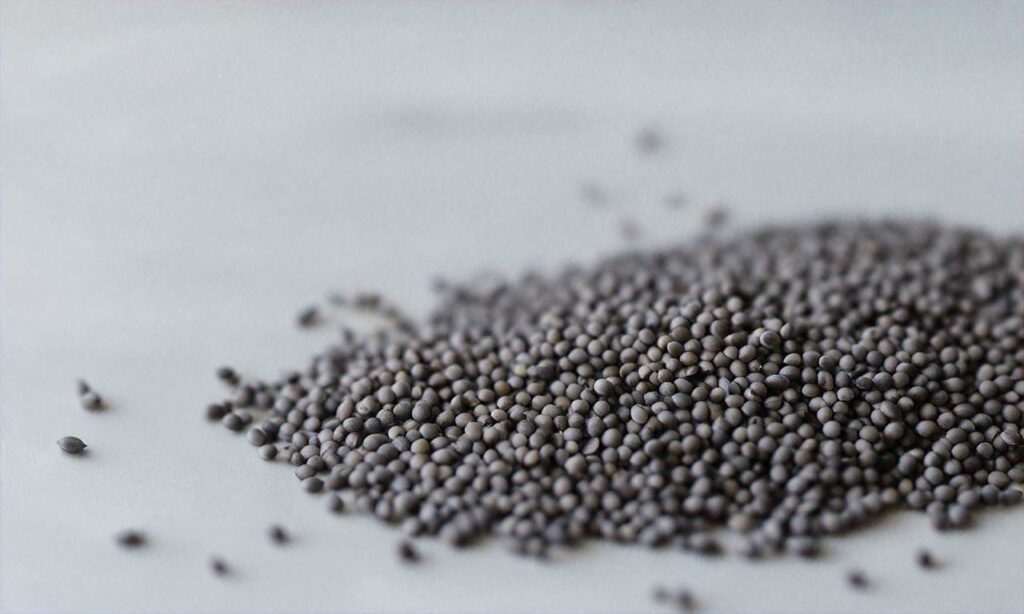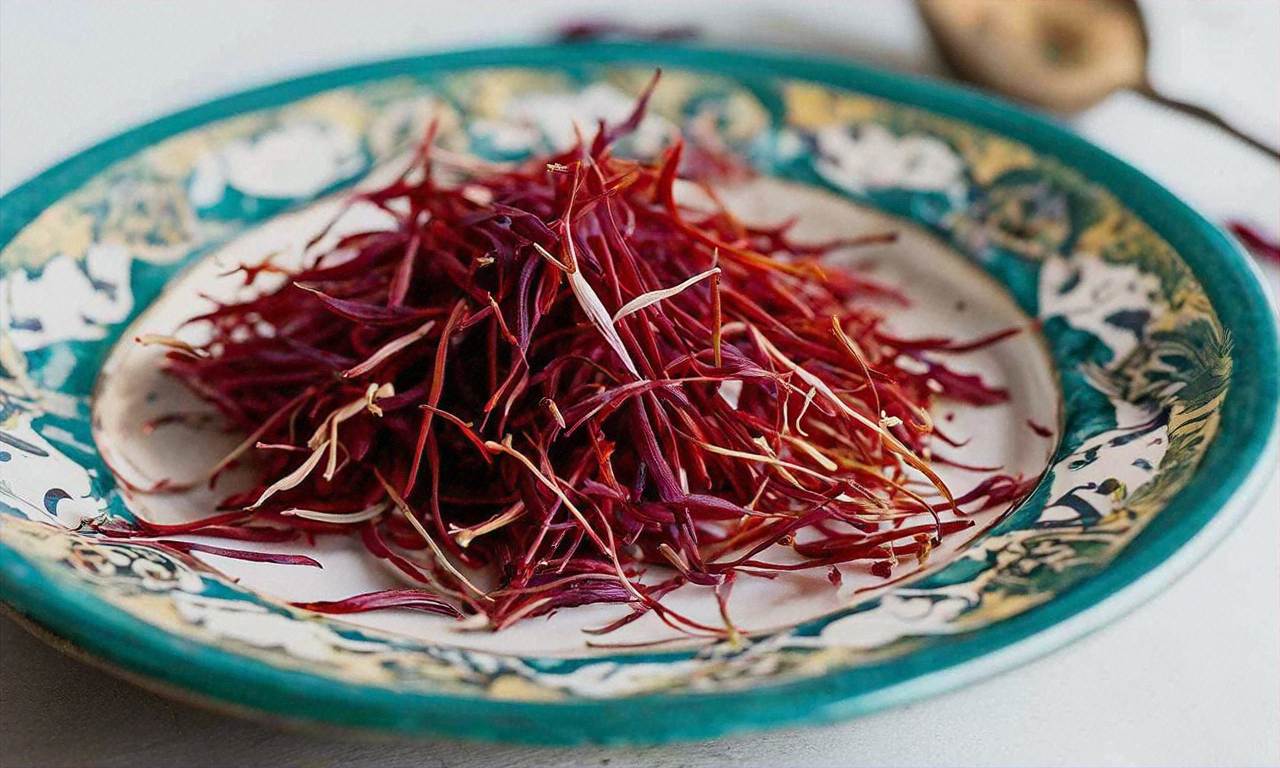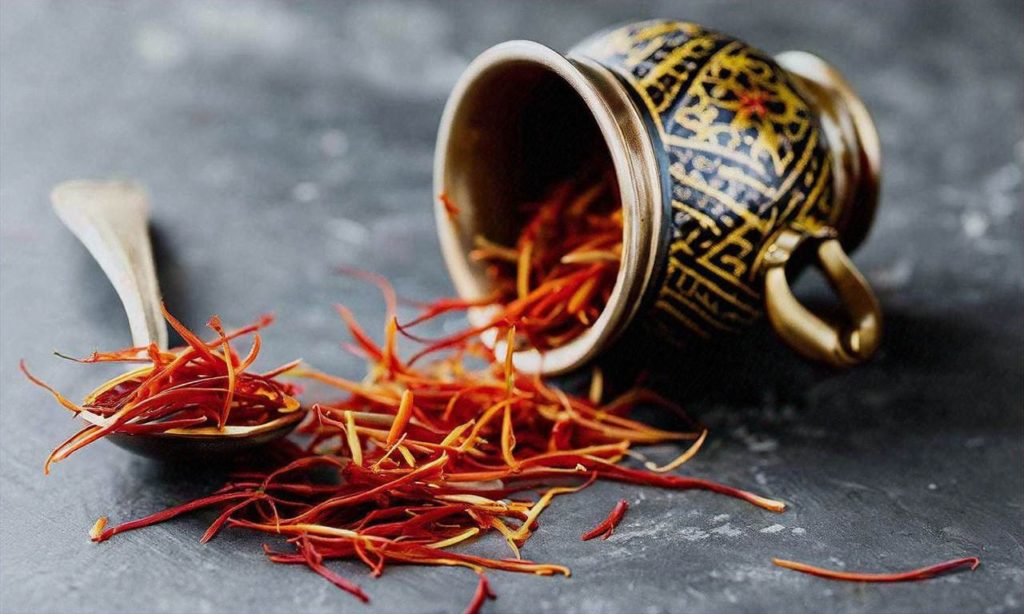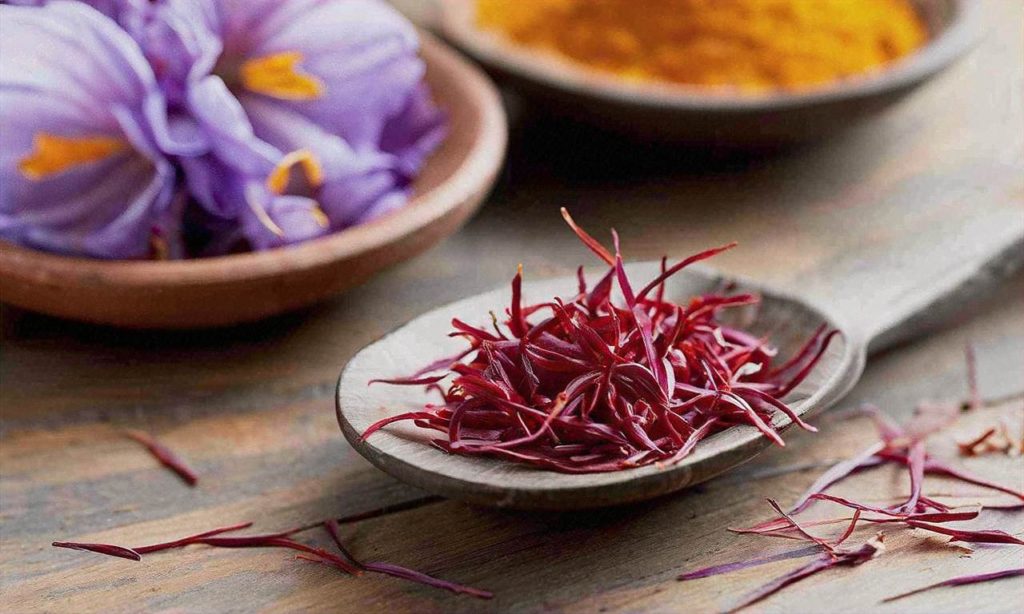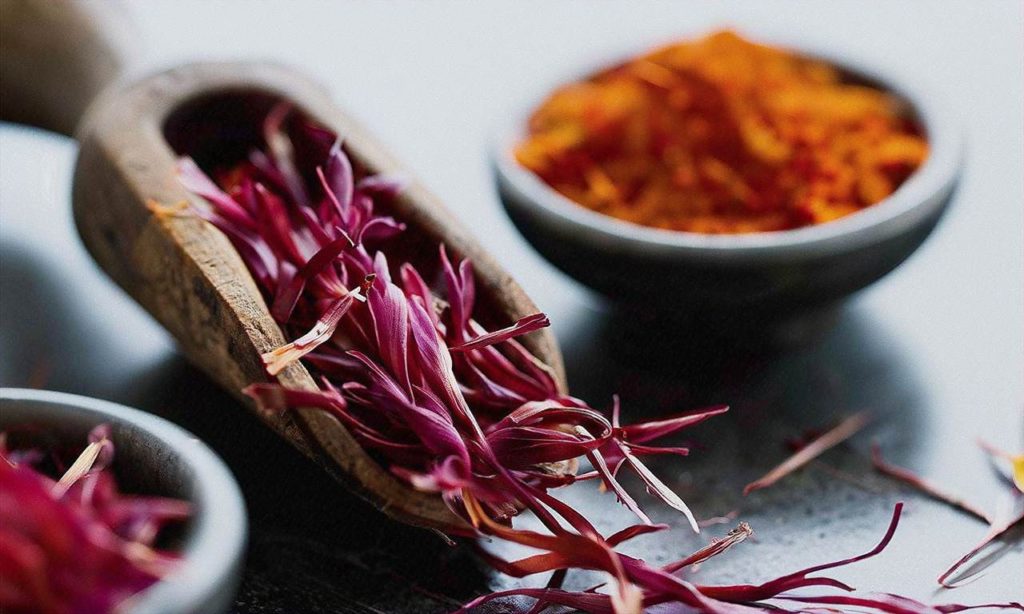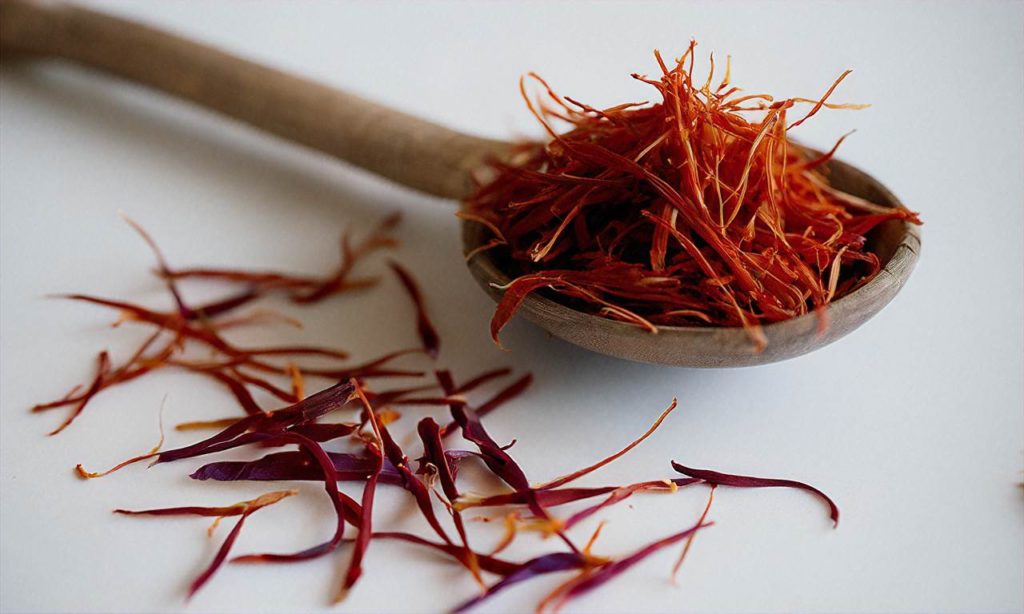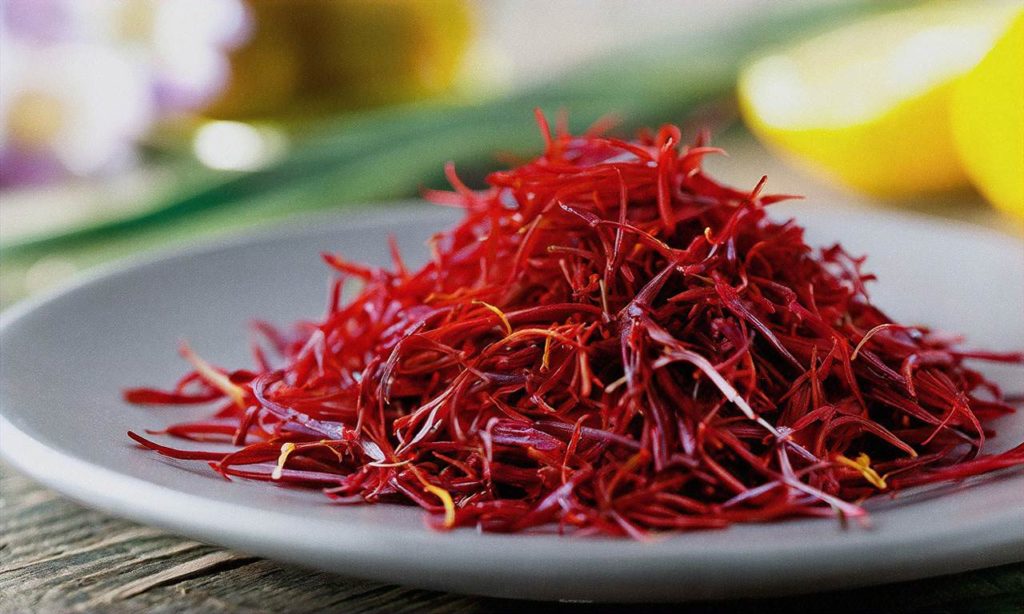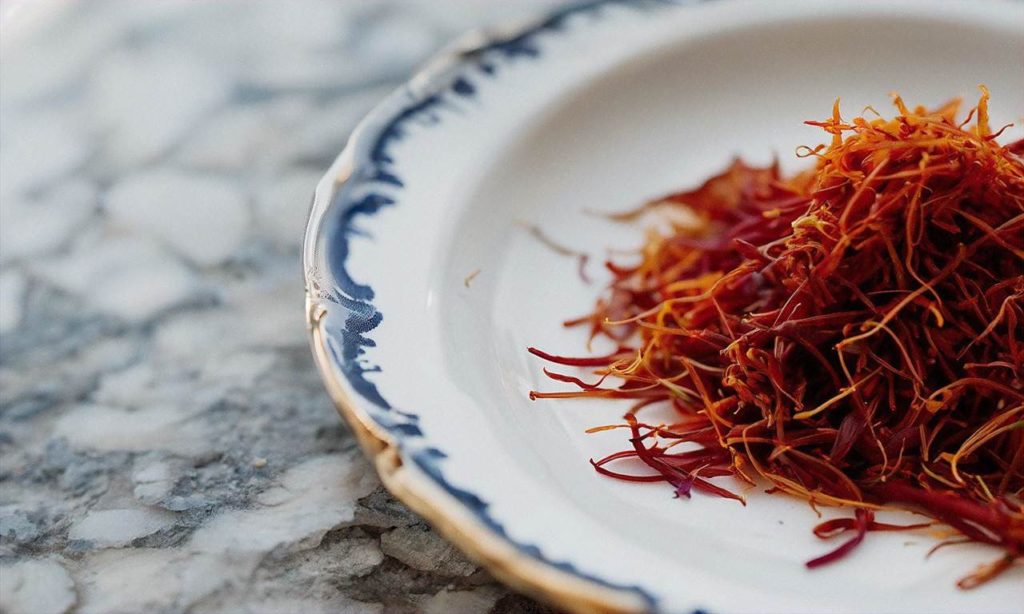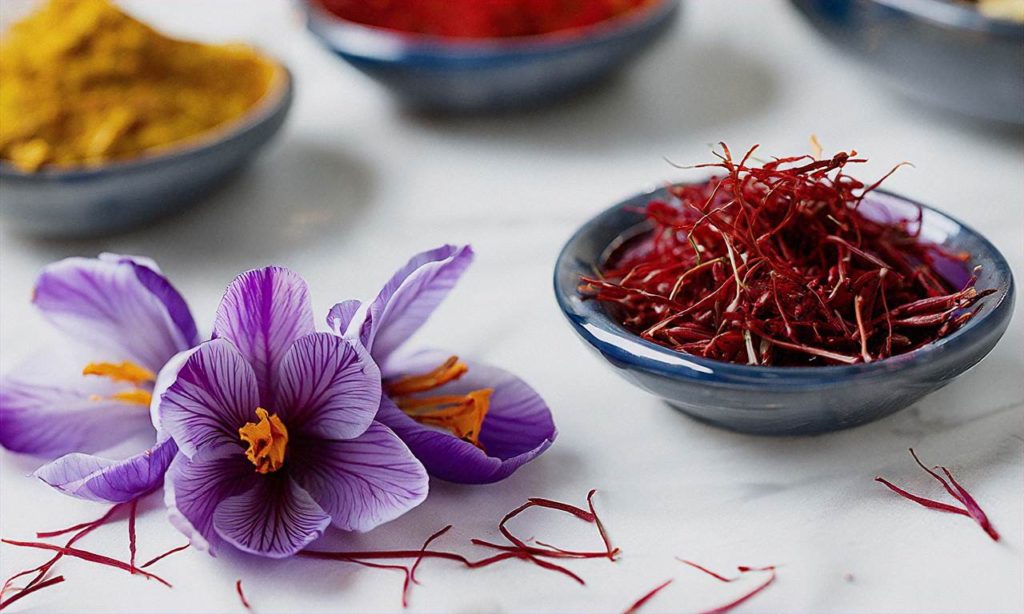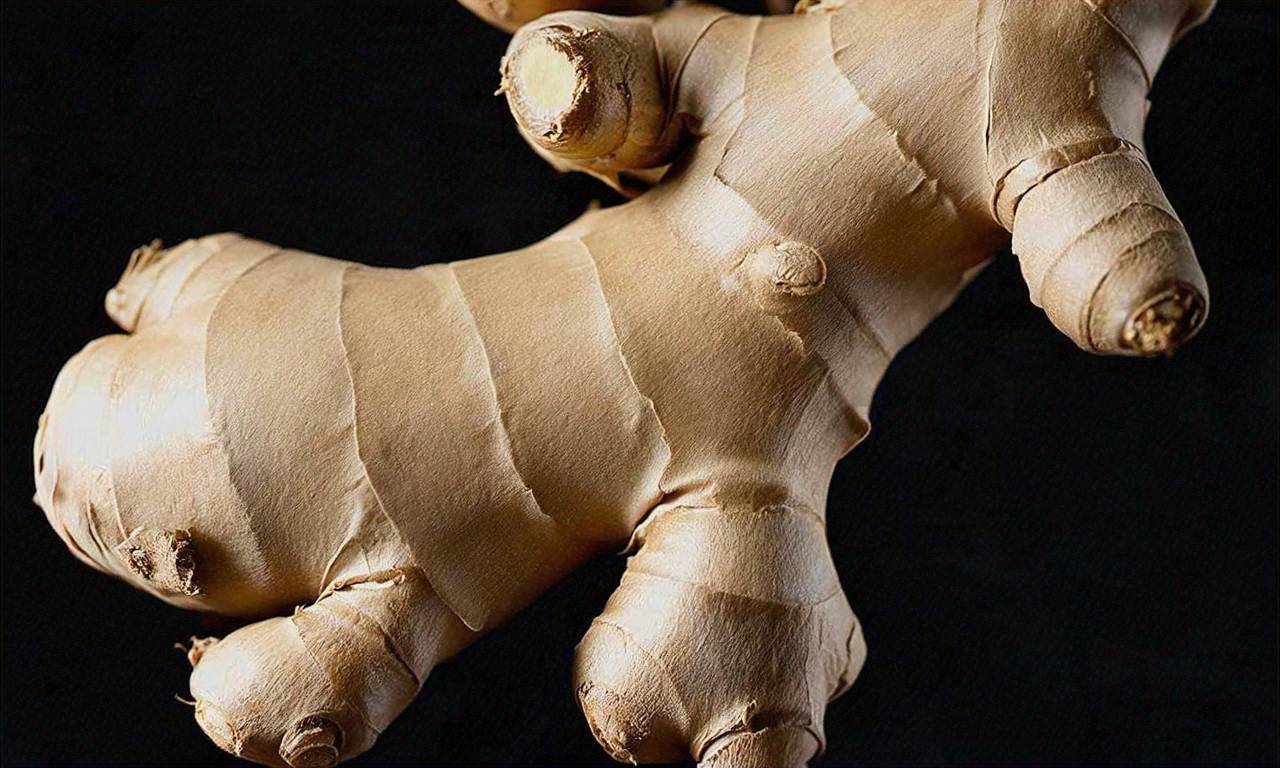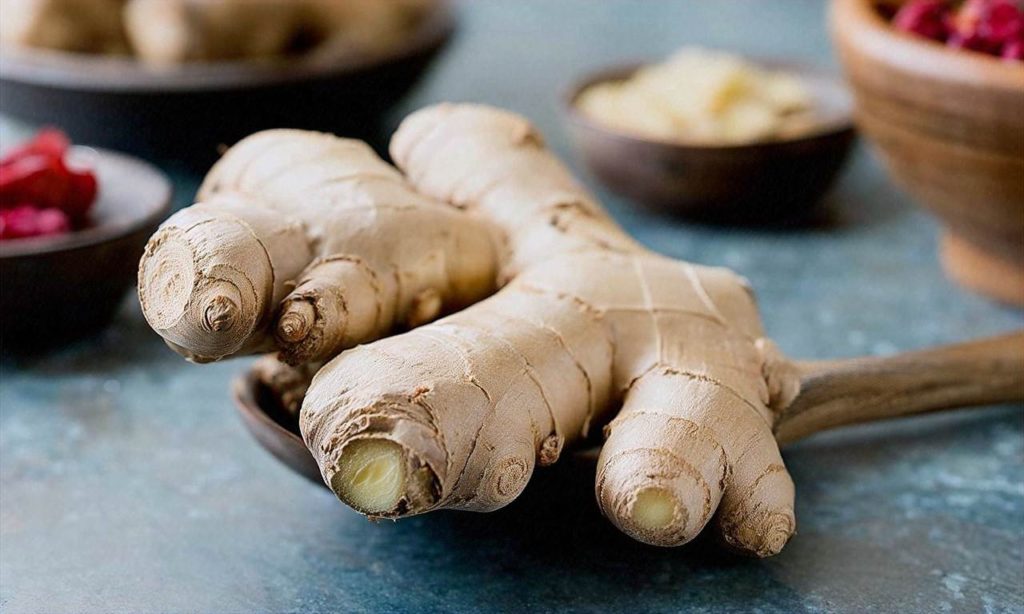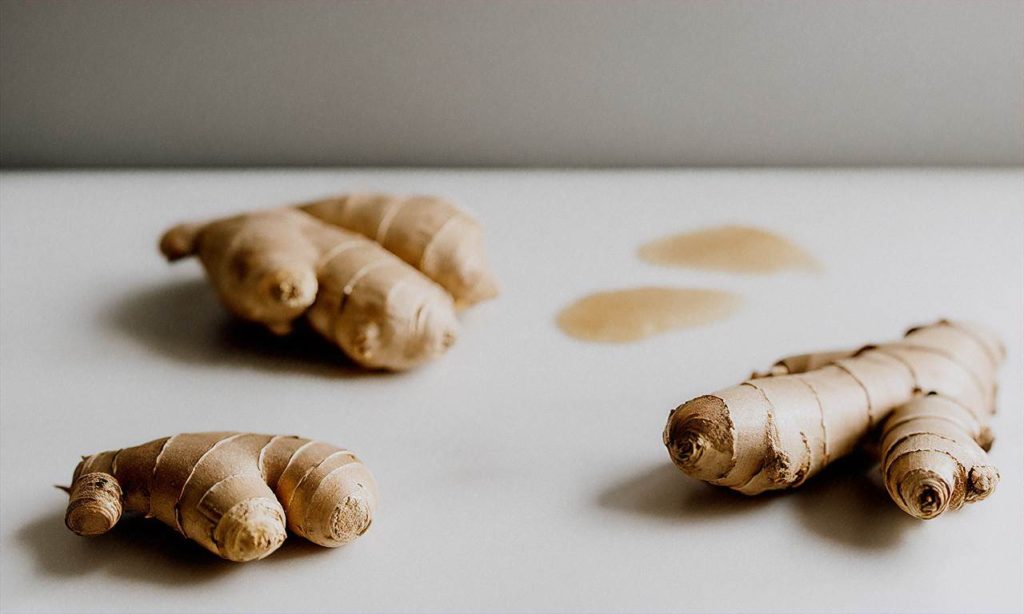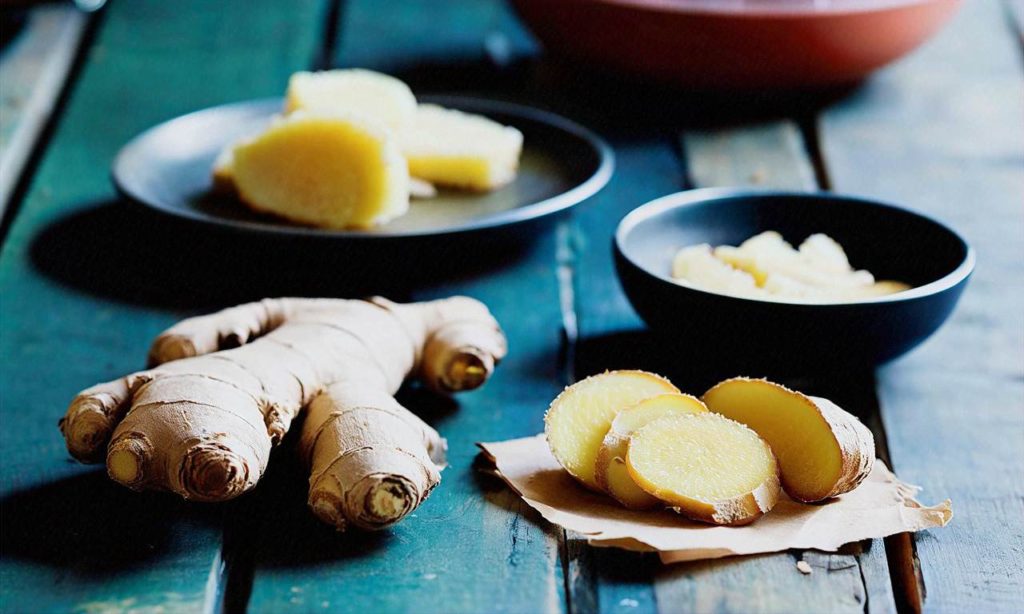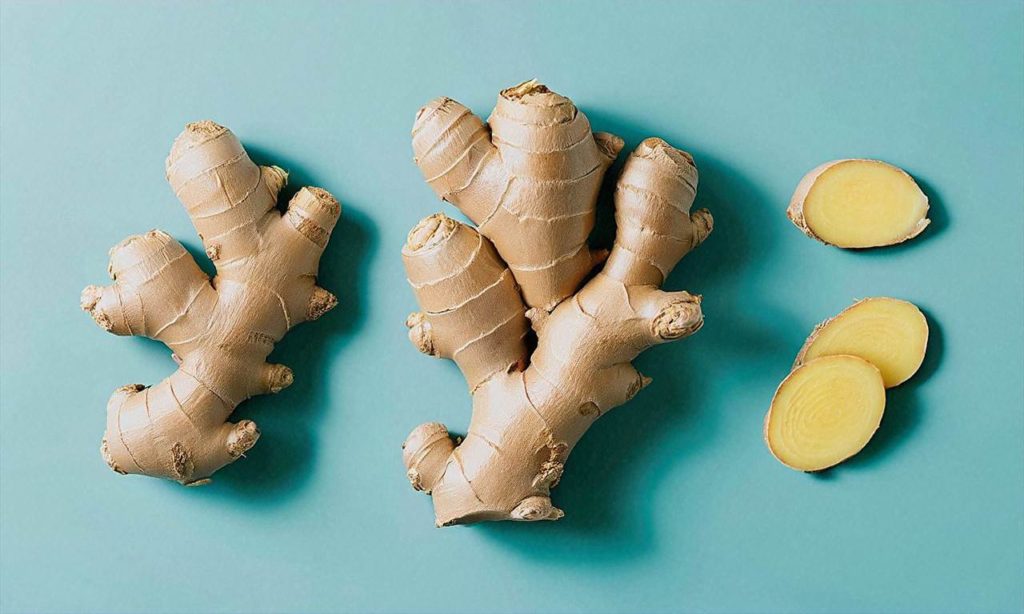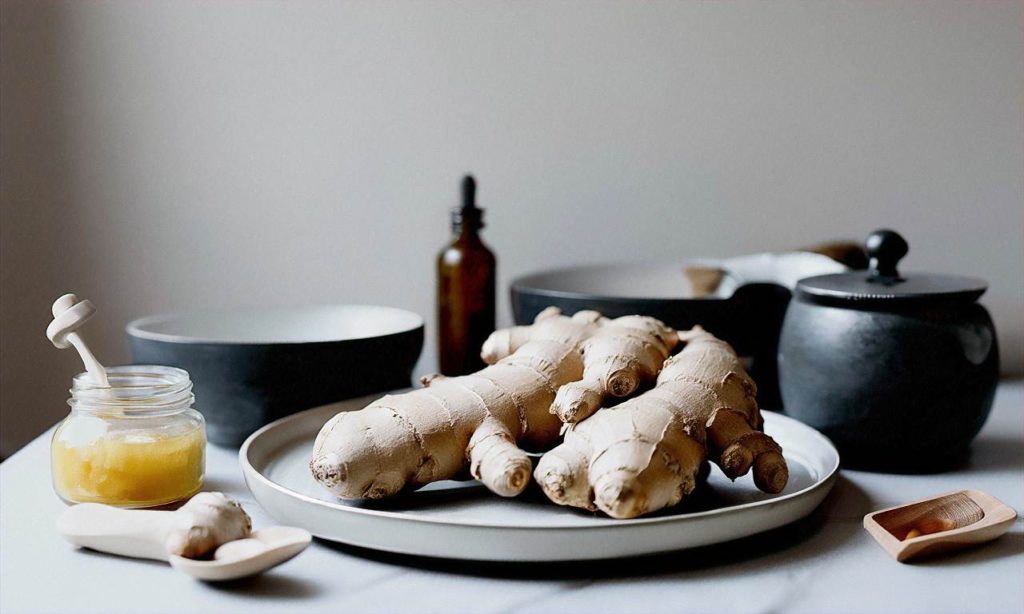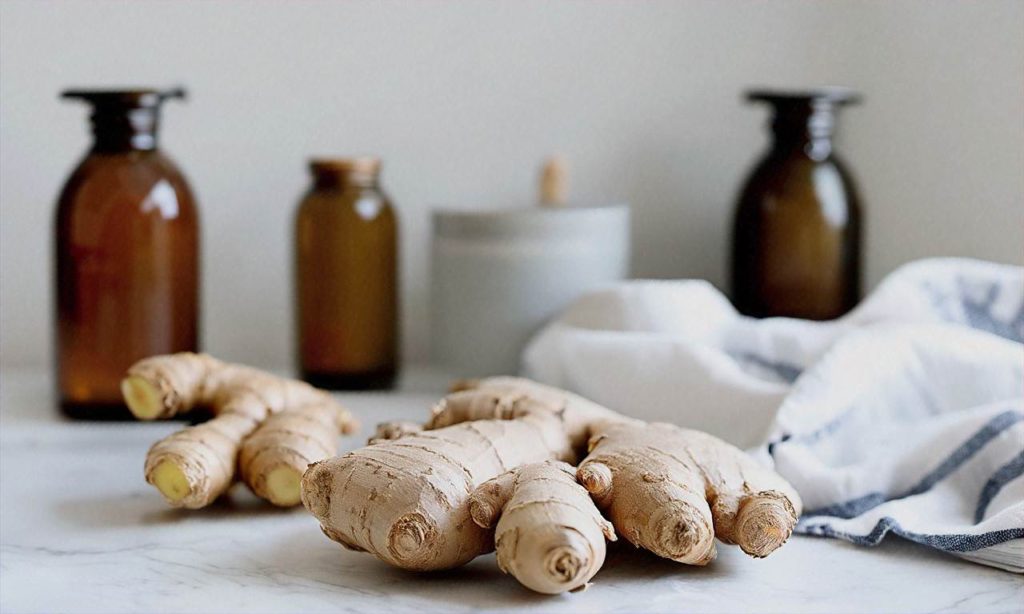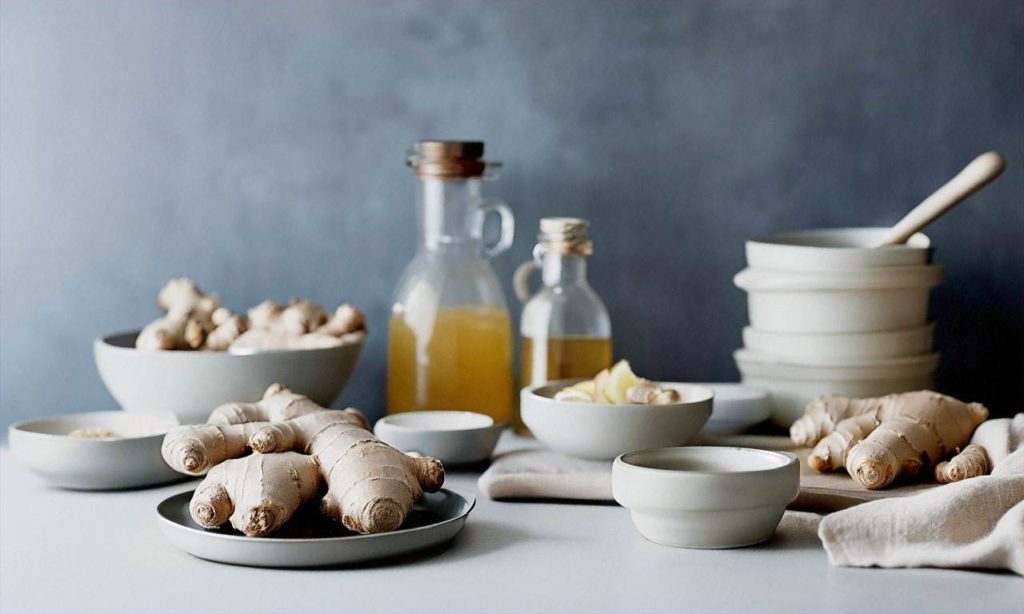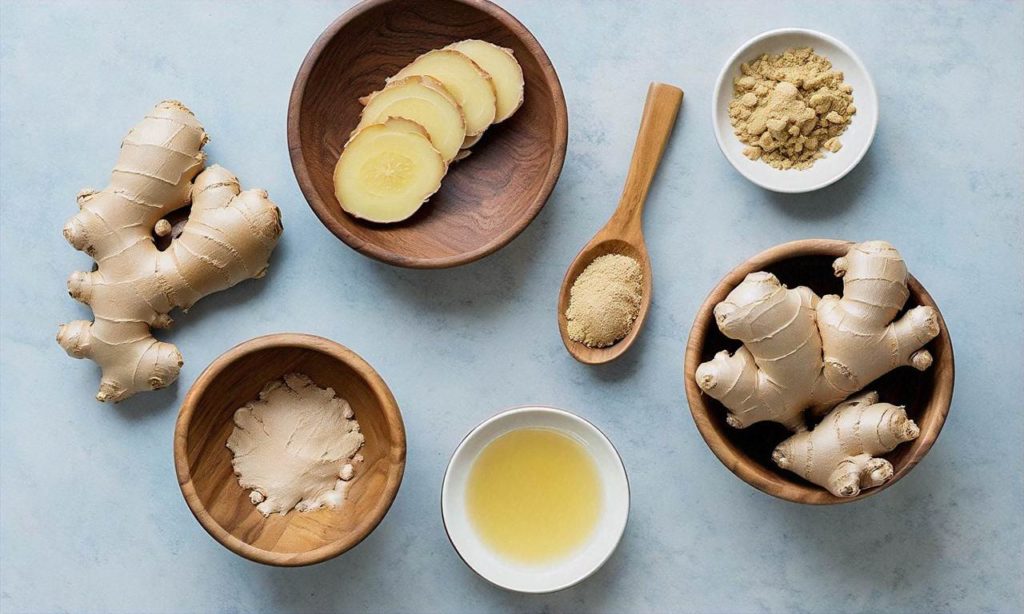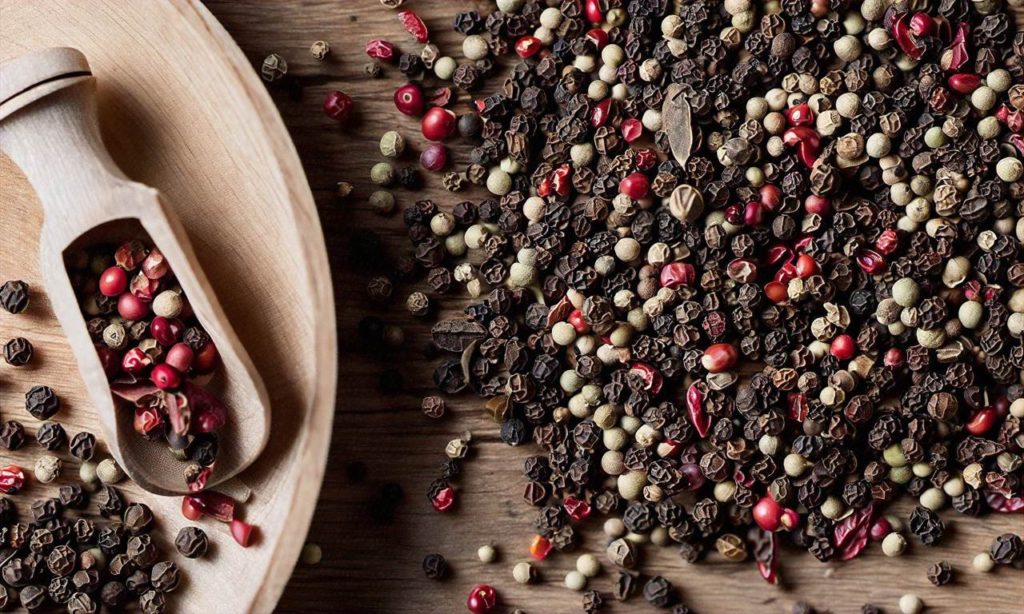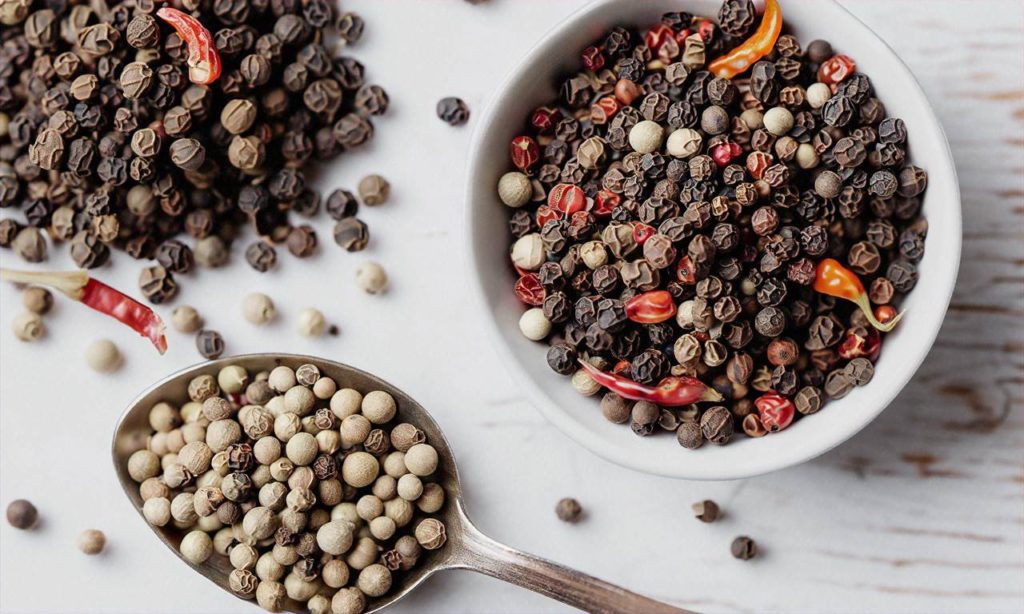Introduction to Basil
Basil 101: Growing, Cooking, and Health Benefits – Introduction to Basil
Basil is one of the most popular and beloved herbs in cuisines around the world. As part of the mint family, this fragrant green herb has been used for culinary and medicinal purposes for thousands of years. But what exactly is basil?
Basil, or Ocimum basilicum, is an annual herb that originated in the regions of Iran, India and other tropical countries in Asia. Today, basil is grown commercially on every continent thanks to its popularity and importance as an ingredient and garnish.
There are actually many different varieties of basil. The most common type is sweet basil, which has a sweet, peppery flavor and scent. Other varieties like lemon basil, cinnamon basil and Thai basil have their own unique smells and tastes. The different basil types can be used to add different flavors to dishes.
No matter the variety, basil plants are characterized by their oval leaves with pointed ends. The plants can grow over 2 feet tall when mature. Basil is extremely versatile – it can be used fresh, dried or frozen in cooking. Its flowers and leaves are also edible.
So why is basil so popular in cooking? One reason is its incredible flavor and aroma. Basil has floral, anise-like notes that are released when its leaves are cooked or chopped. This makes basil a star ingredient in recipes like pesto, marinara sauce, Caprese salad and Thai curries. Basil also pairs exceptionally well with tomatoes, cheese, eggs, chicken and lemon flavors.
In addition to its bold, sweet taste, basil offers many potential health benefits. Basil is packed with nutrients like vitamin K, vitamin A, calcium, iron and potassium. It also contains compounds that may have anti-inflammatory and antimicrobial properties. Research suggests that basil could help prevent chronic illnesses, improve brain function and more – though more studies are still needed.
With its importance in global cuisine, intriguing history and health benefits, it’s clear why basil has been cherished for so long. This versatile herb continues to be a staple in kitchens and gardens worldwide. Whether you’re cooking pasta al pesto or a Thai chicken basil stir fry, it’s hard to imagine many savory dishes without the iconic flavor of basil.
The rest of this article “Basil 101: Growing, Cooking and Health Benefits” will explore everything you need to know about basil. You’ll learn optimal growing conditions, the best varieties for your kitchen, ways to use basil’s flavor in snacks, main dishes and even cocktails. We’ll also dive into the interesting backstory of basil and fun facts about this aromatic herb. Let’s start unlocking the secrets of basil!

Optimal Conditions for Growing Basil
Basil is one of the most popular and commonly used herbs in cuisines around the world. With its sweet, aromatic flavor, basil adds a fresh taste to many dishes. While dried basil is convenient, nothing compares to the flavor of fresh basil straight from your garden or windowsill.
Growing basil is relatively easy as long as you provide the right conditions. The keys to successfully growing basil are plenty of sunlight, warm temperatures, well-drained soil, adequate moisture, and good air circulation. Follow these simple guidelines for optimal conditions, and you’ll be harvesting delicious basil all season long.
Sunlight Requirements
As a plant native to tropical regions, basil thrives on sunlight. It needs at least 6-8 hours of full sun exposure each day. Basil grown in shade tends to become leggy as the plant reaches for sunlight. The leaves may also have less flavor. Choose the sunniest part of your vegetable garden, a bright windowsill, or a spot on a balcony or patio that gets sunlight for most of the day. Basil can even be successfully grown indoors under grow lights.
Ideal Temperatures
Warmth-loving basil prefers daytime temperatures between 70-85°F (21-29°C) and 60-70°F (16-21°C) at night. Temperatures below 50°F (10°C) can damage basil plants. In most climates, basil can be grown outdoors during the warm summer months. Use fabric row covers or cloches to protect basil if cool weather threatens. Bring potted plants indoors or move to a greenhouse if temperatures drop too low outside. Indoors, keep basil in the warmest, sunniest room in your home.
Soil Requirements
Rich, well-drained soil is key for healthy basil plants. The soil should be slightly acidic to neutral, with a pH between 6.0-7.5. Before planting, work some compost or aged manure into the top 6 inches of soil to increase fertility and moisture retention. Good drainage is also critical to prevent fungal diseases; add organic material like compost or peat moss to improve water drainage if necessary. Use container gardening for basil if you don’t have ideal garden soil—just be sure the pot or planter has drainage holes at the bottom.
Watering Basil 101
Basil needs consistently moist soil but not waterlogged conditions. Allow the soil surface to dry slightly between waterings, then water thoroughly. Drooping leaves often indicate under-watering. Apply water at soil level rather than overhead to prevent fungal diseases. Add a thick layer of mulch around outdoor basil plants to maintain soil moisture and discourage weeds. For potted basil, choose containers large enough to avoid frequent watering. Never let potted basil dry out completely.
Air Circulation
Good air movement discourages fungal disease and helps produce sturdy basil stems and leaves. Space plants 12-15 inches apart in the garden to allow air to circulate. Pinch off the top pair of leaves once plants reach 6 inches tall to encourage bushy growth. For indoor basil, use oscillating fans to gently blow air over the plants. Avoid cold drafts. Open nearby windows whenever possible for fresh air.
By following these optimal conditions—ample sunlight, warm temperatures, fertile soil, consistent moisture, and good air flow—you’ll be rewarded with an abundant basil harvest all season long. Adjust conditions as needed based on your climate, gardening zone, and microclimate where basil is grown. Soon your kitchen will be filled with the aromatic flavor of homegrown basil.
Planting and Caring for Basil
Basil is an extremely versatile herb that is easy to grow and care for. With proper planting and care, you can have an abundant harvest of flavorful basil leaves to use in various dishes all season long.
When to Plant Basil
The best time to plant basil depends on your climate. Basil is a warmth-loving plant that thrives in hot weather. Most gardeners recommend planting basil outdoors after all danger of frost has passed when daytime temperatures reach at least 65°F to 70°F and when the nighttime temperatures stay above 50°F. This is usually late spring to early summer.
If you live in an area with a long growing season, you can sow basil seeds directly in the garden. In cooler climates with shorter summers, it’s best to get a head start by growing basil indoors and transplanting seedlings outside later. You can start basil indoors 4-6 weeks before the last expected frost.
Where to Plant Basil
When planting basil, choose a spot that gets 6-8 hours of full sun daily with rich, well-drained soil. Basil needs consistently moist soil and does poorly in drought-like conditions. Amend the soil with compost or aged manure before planting to improve drainage and nutrients.
Container gardening is also a great option for growing basil. Use a pot that’s at least 6 inches deep with drainage holes at the bottom. A 12-14 inch diameter pot will provide enough room for basil roots to spread. Make sure to use a quality potting mix.
How to Plant Basil
If planting basil from seed, sow seeds 1⁄4 inch deep. Space seeds or seedlings 12-15 inches apart in rows set 15-18 inches apart. When transplanting store-bought basil plants into the garden, very gently loosen the root ball before placing it in the planting hole. Backfill the hole with soil, pack gently around the plant, then water thoroughly after transplanting.
To plant basil in containers, sow 2-3 basil seeds or plant seedlings spaced 4-6 inches apart in pots. After they sprout, thinning out the weaker seedlings will allow the strongest one to thrive.
Caring for Growing Basil
To keep your basil producing abundantly all season long, consistent care and maintenance is required. Here are some key tips:
Water basil plants regularly, about 1-2 inches per week. Allow the soil to slightly dry out between waterings. Container basil may need more frequent watering.
Pinch or snip off flower buds as soon as they appear to send the plant’s energy towards leaf and stem growth instead of flowers.
Pinch off the top leaves frequently to encourage bushier growth. Always pinch above leaf nodes.
Feed basil monthly with a balanced liquid fertilizer or compost tea. Too much nitrogen leads to lots of leaves but less flavor.
Mulch around basil in garden beds to retain moisture and keep roots cool. Grass clippings or straw work well.
Remove any leaves or stems that begin to yellow or wilt.
Check regularly for pests like aphids. Take action promptly to prevent spread.
By giving your basil plants consistent moisture, pruning, fertilization, and pest monitoring, you’ll be harvesting tons of fresh, flavorful basil all season long. Proper planting and attentive care will keep your basil healthy and productive.
Pest and Disease Control for Basil
Basil is an aromatic herb that is prone to several pests and diseases. When growing basil, it is important to be aware of potential problems and have a strategy to prevent or manage them if they occur. This will allow you to have a healthy basil crop and avoid disappointing damage.
Aphids
Aphids are small sap-sucking insects that can infest basil plants. They gather on the undersides of leaves and stems, draining plant fluids. This can cause leaves to yellow, distort, wilt, or die. Check the undersides of basil foliage regularly for clusters of tiny pear-shaped aphids. Knock them off with blasts of water, or use insecticidal soap or neem oil. Ladybugs also prey on aphids.
Cutworms
Cutworm caterpillars chew through basil stems at soil level, killing all growth above the cut. Protect plants with collars placed around stems when setting out or wrap stems loosely with aluminum foil. Beneficial nematodes applied to soil will parasitize cutworms.
Fusarium Wilt
This fungal soil disease causes basil leaves to yellow and drop. Eventually the entire plant wilts and dies. Avoid planting basil in the same spot as previous basil crops, and don’t overwater. There are no chemical controls, so prevent spread by removing and destroying affected plants. Some basil varieties have resistance.
Leaf Spot and Blight
Leaf spot shows up as small brown spots on foliage, surrounded by yellow halos. As spots enlarge, they turn blotchy brown or black. Leaf blight starts as brown streaks on stems that spread to leaves. Both are fungal diseases favored by wet conditions. Avoid overhead watering, allow for good air circulation, and remove affected leaves promptly. Apply appropriate fungicides if infection is severe.
Whitefly
Like aphids, whiteflies drain plant sap. They are tiny yellowish insects that congregate on the undersides of leaves. A heavy infestation causes yellow stippling or silvering on upper leaf surfaces. Check for whiteflies before bringing basil plants indoors. Control with insecticidal soap, horticultural oils, or other insecticides.
Slugs and Snails
These pests chew ragged holes in basil leaves and can eat seedlings down to the soil. Reduce hiding spots by removing weeds and debris around plants. Set out boards for slugs and snails to gather underneath, then collect and destroy them daily. Use iron phosphate bait or diatomaceous earth. Copper strips around planting beds also deter snails.
When growing basil, be vigilant about scouting for pests or disease problems. Taking quick action at the first signs of infestation will allow you to get the situation under control before major damage is done. Implementing preventative measures tailored to common basil threats will help protect your crop. With some care and attention, you can grow lush, productive basil plants.
Harvesting Basil
Basil is an annual herb that reaches its peak flavor and aroma right before flowering. Knowing the best time to harvest ensures you get the maximum flavor from your basil plants. This section of our Basil 101 guide covers everything you need to know about harvesting this popular culinary herb.
When to Harvest Basil
The ideal time to harvest basil is just as the plant puts out a flush of new growth. This is when the leaves contain the highest concentrations of essential oils that give basil its signature flavor and scent. Most varieties of basil are ready to harvest 60-90 days after sowing.
To check if your basil is ready to pick, gently rub a leaf between your fingers and smell it. A strong, intense aroma means it’s prime for harvesting. The leaves should be a vibrant green color without any wilting, yellowing or brown spots. Flower buds may also start to emerge at the tips of the stems as basil nears its peak.
It’s best to harvest basil in the morning after any dew has dried but before the sun gets too hot. The heat causes the volatile essential oils in basil to evaporate quickly once picked. Morning harvesting helps preserve more of the oils.
How to Harvest Basil
When harvesting basil, don’t remove more than one-third of the plant at a time. This prevents shocking the plant and allows it to continue producing leaves. To harvest, hold the main stem in one hand near the base of the plant. Use a pair of clean, sharp scissors or garden shears in your other hand to snip off stems just above sets of leaves or lateral buds. Cutting above buds encourages bushier, compact growth.
Take care not to damage the main stem and any remaining leaves when harvesting. Damaged tissue is vulnerable to disease. Remove any flowers along with about four to six inches of stem below flower spikes. This channels the plant’s energy into leaf production instead of setting seed.
Keeping Basil Producing
To encourage a long harvest window, you’ll want to continually prune your basil plants. By cutting above leaf nodes, you signal to the plant that it should keep branching out with new leaf growth instead of running to seed. Deadheading flowers as they appear also redirects energy away from bolting.
Providing optimal growing conditions extends harvest time. Basil thrives in moist, fertile soil and a sunny location. Apply a balanced liquid fertilizer every two to three weeks. Water at the base of plants, taking care to avoid wetting the foliage. Proper site selection, consistent moisture, and regular feeding keeps basil happy and productive in the garden.
Post-Harvest Care for Basil Cuttings
After harvesting, promptly remove any flowers or damaged leaves from basil stems. Leave about four to six inches of stem attached to leaf sets for better freshness retention. Immerse the cut ends of basil stems in a cup of water. Place on the counter out of direct sunlight for optimal storage. This helps keeps cut basil fresh for up to a week. The water prevents wilting while allowing the leaves to continue transpiring until you’re ready to use them.
For basil you plan to use right away, gently rinse under cool water before patting leaves dry with paper towels or a salad spinner. Dry basil has better texture and flavor retention compared to wet leaves. Refrigeration quickly degrades basil’s flavor. For short-term storage, stand cut stems in a glass of water out on the counter. You can also place whole stems in a loose plastic bag in the warmest part of your fridge. Use basil within a few days for best quality.
Preserving Your Basil Bounty
If you end up with more basil than you can use fresh, try freezing, drying or infusing it in oil. Freezing is the easiest method for long-term storage. Simply rinse, dry and place whole basil leaves in a single layer on a baking sheet. Freeze solid then transfer to freezer bags, removing as much air as possible before sealing. Frozen basil retains more flavor compared to drying but won’t hold up to cooking. It’s best for adding to uncooked foods like pesto or salsa.
To dry basil, wash and pat dry leaves before stripping them from stems. Discard any blemished foliage then spread leaves in a single layer on mesh racks or baking sheets. Dehydrate at 95°F to 115°F until completely crispy. Store dried basil in airtight containers out of sunlight for up to a year. Reconstitute dried leaves by crumbling them into liquid for use in sauces, soups and more.
For flavored basil oil, pack alternating layers of fresh basil and kosher salt into sterilized jars or bottles. Top off with your choice of olive, grapeseed or nut oil until all plant matter is submerged. After two weeks infusing out of direct light, strain and rebottle the basil oil. Refrigerate and use within 3 months. Delicious in salad dressings, drizzled over pasta, pizza and bruschetta or as a dip for crusty bread.
Basil is easy to grow and simple to harvest. Just a few plants can provide an abundance of leaves to enjoy fresh or preserve by freezing, drying or infusing in oil. Follow these basil harvesting tips and techniques for the best flavor, productivity and storage solutions. For more information, be sure to check out the rest in our Basil 101 series.
Storing and Preserving Basil
Basil is an aromatic herb that adds fresh flavor to many dishes. However, its delicate leaves and oils can lose potency quickly after harvest. Knowing the best storage and preservation methods can help you enjoy basil’s taste and health benefits year-round. This section of “Basil 101: Growing, Cooking, and Health Benefits” covers tips for retaining basil’s signature scent and flavor in the fridge or freezer.
Proper storage is key after harvesting basil from the garden or bringing it home from the market. Like most herbs, basil is highly perishable so ideal storage conditions are important. Here are some best practices for keeping basil fresh before use:
– Store basil unwashed and dry in the refrigerator. Wash leaves only right before use. Moisture speeds up deterioration.
– Wrap basil lightly in a paper towel or clean kitchen cloth, then place inside a resealable plastic bag with excess air squeezed out. The paper soaks up condensation while the plastic retains moisture.
– Put the wrapped basil bundle in the warmest area of the fridge, usually the door. The cold environment slows ripening but warmth prevents chill damage.
– Use basil within 3-4 days for peak freshness. Discard leaves if they show signs of wilting or blackening.
Extend your basil supply past a few days with proper preservation methods. Drying, freezing, infusing in oils or vinegars, and pesto-making all allow enjoyment of basil flavors for months post-harvest. Consider the planned use when choosing a preservation technique.
Air Drying Basil
Air drying bundles of basil leaves is an easy preservation tactic with minimal equipment needed. Follow these instructions:
– Select freshly-picked basil stems with robust foliage. Discard any poor quality leaves.
– Gently wash basil and thoroughly pat leaves dry with a paper towel. Any moisture speeds deterioration.
– Form small bundles of 5-10 stems and secure ends tightly with cotton thread, twine or strips cut from nylon stockings.

– Hang bundles individually or in small groups stem-side down in a warm, dry, dark place with good air circulation.
– Leaves are fully dried in 1-2 weeks when they crumble easily between fingers.
– Crumble dry leaves from stems and store in an airtight glass jar kept in a cool, dark place. Properly stored, dried basil maintains good flavor for months.
Freezing Basil
Freezing is another preservation method that locks in basil’s flavorful oils and aroma. Follow these simple steps:
– Select young, tender basil leaves for freezing. Wash and dry thoroughly with a salad spinner or paper towels.
– Remove leaves from stems and place desired quantities in sealable plastic freezer bags. Exclude excess air.
– Alternatively, chop leaves finely or purée in a food processor with some olive oil to make pesto before freezing in ice cube trays for later use.
– Label bags or trays with the date and freeze immediately. Use frozen basil within 6 months.
Infused Oils
Infusing basil’s essential oils into olive or vegetable oil before storage also retains intense flavor. Follow this easy infusing process:
– Harvest a large bundle of fresh basil still on the stems. Gently wash leaves, drain well and pat thoroughly dry.
– Place several stems together in a clean glass jar or bottle and cover completely with your choice of oil. Good options are olive, grapeseed or sunflower oil.
– Store jar out of direct sunlight for 2-3 weeks, gently shaking every few days to distribute flavors.
– Taste oil after 2 weeks infusing time. If the basil flavor is too mild, let it continue infusing for another week.
– When the olive oil reaches desired intensity, remove the basil stems with tongs. Pour flavored oil into a sterile glass bottle or jar through a fine mesh strainer lined with cheesecloth to remove any particles.
– Store at room temperature out of sunlight for up to 2 months or refrigerate for up to 6 months. Use infused oil to add punch to cooking, marinades, dressings and bruschetta.
Basil Vinegar
For bright herbal tang, infuse your vinegar with basil flavors using this easy technique:
– Lightly bruise a packed cup of fresh basil leaves still on stems using a wooden spoon or by hand. This releases the essential oils.
– Sterilize a glass jar and lid by boiling for 10 minutes. Place bruised basil in hot jar and cover completely with white wine, champagne, rice or apple cider vinegar.
– Seal lid tightly and store in a cool, dark place, shaking jar every other day.
– Start tasting the vinegar after two weeks. When the acidity reaches your desired basil intensity, strain out the basil stems through a mesh strainer lined with cheesecloth.
– Transfer infused vinegar to a sterile storage container like a glass bottle or jar. Refrigerate and use within 6 months as a flavor boost for salad dressings, marinades, sautéing and pickling.
Basil Pesto
One of the most popular ways to preserve abundant basil harvests is to make batches of the iconic Italian sauce pesto. To prepare:
– Process 2 packed cups of fresh basil leaves, 1/2 cup olive oil, 1/3 cup pine nuts or walnuts, 3 peeled garlic cloves, 1/2 cup parmesan cheese and salt and pepper to taste in a food processor until smooth.
– Transfer pesto to an airtight container and top with a thin layer of olive oil to prevent browning.
– Store in the refrigerator and use within 5 days for peak flavor.
For longer frozen storage, transfer pesto to ice cube trays, top with oil, cover tightly and freeze. Pop out frozen pesto cubes into freezer bags. Use within 4 months.
Follow these storage and preservation tips to reduce basil waste and enjoy this aromatic, flavorful herb year-round. Refer to other sections of “Basil 101: Growing, Cooking, and Health Benefits” for more advice on successfully growing, cooking and maximizing the benefits of incredible, edible basil.
Popular Varieties of Basil
There are over 60 varieties of basil, each with its own unique flavor profile, aroma, color, and uses in the kitchen. When embarking on growing basil at home or shopping for it at the store or farmers market, it helps to know the differences between the most common types so you can choose the right one for your needs.
The most popular variety is sweet basil (Basil 101: Growing, Cooking, and Health Benefits), which is likely what comes to mind for most when they think of basil. Sweet basil has large green leaves with an intensely sweet, peppery flavor and aroma. It’s the variety most often used for pesto, tomato sauces, Caprese salad, and fresh basil garnishes.
For those who want to explore bolder basil flavors, try spicy bush basil, which has small green leaves but packs a punch of heat and spice. The camphor-like scent of African blue basil is reminiscent of rosemary and pairs nicely with heartier meats and beans. Cinnamon basil brings a sweet, spicy kick and scent of cinnamon that works well in fruit applications and some Asian dishes. Lemon basil has a strong citrus flavor that brightens up seafood. Anise basil tastes like licorice and fennel and is nice with oranges.
In terms of appearance, purple basil varieties add vibrant color. Dark opal basil has deep reddish-purple leaves that make a beautiful garnish or pesto. Red Rubin basil has purple stems and vibrant red leaves. Thai basil has green leaves but striking purple stems and flowers.
Genovese basil is an Italian variety considered the best for making pesto, as it has large leaves that yield abundant harvests of that signature sweet basil flavor. Napoletano basil is a bit flatter and more compact but with a similar flavor profile. Greek basil plants produce medium size green leaves with a strong, spicy aroma.
Lettuce leaf basil has extra-large ruffled leaves that almost resemble a leaf lettuce. It makes great wraps for finger foods. Spicy globe basil is very compact with tiny leaves, making it a good option if space is limited. Cardinal basil has bright red flowers that can add ornamental appeal to the garden in addition to flavor and aroma.

When choosing which type of basil to grow or cook with, consider the flavor you want (sweet, spicy, citrus, etc.), the dish you’ll be using it in, whether you want color from purple varieties or ornamental appeal from red flowers, and growing conditions that work for your climate. The many varieties of this versatile herb open up countless possibilities for home chefs.
Some popular ways to enjoy the unique flavors of different basil varieties:
– Make a mixed basil pesto with sweet, Thai, and cinnamon basil
– Fry up Thai chicken or beef with Thai basil
– Grill fish or shrimp skewers with lemon basil
– Infuse lemonade, tea, or cocktails with lemon basil
– Create a colorful Caprese salad with sweet green basil and dark opal basil
– Garnish desserts with anise basil
– Make a Greek salad with Greek basil
– Fill lettuce leaf basil wraps with chicken or vegetable fillings
When exploring new basil varieties, start with a small amount, taste a leaf raw, and experiment with very simple preparations first to appreciate the pure flavors before incorporating into more complex dishes. Discover new dimensions of this essential herb by growing and cooking with various basil types.
Nutrition Facts and Health Benefits of Basil
Basil is an aromatic, flavorful herb that offers many potential health benefits. This versatile plant contains a range of important nutrients and plant compounds.
Nutrition Facts
Basil is low in calories but packs a nutritious punch. One cup of fresh basil contains (1):
– 22 calories
– 3 grams of carbohydrate
– 1 gram of fiber
– 4 grams of protein
– 534% of daily vitamin K needs
– 108% of vitamin A needs
– 14% of calcium needs
– 12% of iron needs
Basil is an excellent source of vitamin K and vitamin A. It also contains notable amounts of manganese, copper, vitamin C, magnesium, and omega-3 fatty acids. The nutrients in basil may provide antioxidant, anti-inflammatory, and antibacterial properties.
Potential Health Benefits
Research suggests that adding basil to your diet may offer the following health benefits:
Supports Heart Health

The nutrients in basil may boost heart health in various ways. Basil contains beta-carotene, a compound that prevents “bad” LDL cholesterol from oxidizing and causing damage to blood vessels. The anti-inflammatory effects of oils like eugenol in basil also help protect the heart. Studies show that basil may reduce blood pressure, cholesterol levels, and factors linked to heart disease (2, 3).
Has Antioxidant Properties
Antioxidants protect the body from damage caused by free radicals and oxidative stress. The essential oils, flavonoids, and other plant compounds in basil provide antioxidant effects. Studies indicate that basil protects cells and tissue from free radical damage (4).
Provides Anti-Inflammatory Effects
Chronic inflammation plays a role in diseases like cancer, diabetes, and autoimmune disorders. The essential oils in basil, including eugenol and rosmarinic acid, demonstrate anti-inflammatory activities according to research. Basil may suppress inflammatory pathways linked to chronic disease (5).
Supports Brain Function
Age-related mental decline and neurodegenerative diseases affect millions worldwide. Studies suggest that two compounds in basil–orientin and vicenin–can protect the brain and enhance cognition. Research shows that basil may boost memory, learning, and information retention (6).
Contains Antimicrobial Properties
Research indicates that basil oil and extracts demonstrate antimicrobial effects against bacteria, yeasts, molds, viruses, and other microbes. Basil’s antibacterial properties make it potentially useful for applications related to food safety and fighting infection (7).
How to Reap the Benefits
It’s easy to incorporate more basil into your eating pattern and reap the nutritional benefits this flavorful herb offers. Here are some simple ways to use more basil:
– Add fresh basil leaves to salads, sandwiches, pasta, pizza, bruschetta, and more.
– Make basil oil by blending basil leaves with olive oil. Use for dipping bread or drizzling over dishes.
– Prepare basil pesto by blending basil, olive oil, garlic, pine nuts, and parmesan cheese. Toss with pasta or vegetables.
– Mix chopped basil into hummus, tapenade, salad dressings, marinades, herb butters, and dips for extra flavor.
– Make basil tea by steeping leaves in hot water. Sweeten with a little honey if desired.
The Bottom Line
With its rich flavor and nutritional content, basil is much more than just a seasoning for pasta sauce. Adding this aromatic herb to your diet provides antioxidants, anti-inflammatory oils, and compounds that support brain and heart health. Reap basil’s benefits by using more fresh or dried leaves to flavor your favorite recipes.
Using Basil in Appetizers and Snacks
Basil is a versatile herb that can elevate simple appetizers and snacks into flavorful bites. Its fresh, aromatic flavor pairs perfectly with tomatoes, cheese, eggs, chicken, seafood, and more. This section of our Basil 101 guide will explore creative ways to use fresh basil in appetizers and snacks.
One of the most popular ways to enjoy basil is in bruschetta. This Italian antipasto features grilled or toasted bread that is rubbed with garlic and tomato and topped with chopped basil, olive oil, and seasonings. The combination of the sweet tomatoes, fragrant basil, and crisp bread makes a perfect starter. Try our Basil Pesto Bruschetta recipe for a flavorful twist on this classic.
Another excellent way to use basil in appetizers is in stuffed mushrooms. Simply mix together chopped basil with breadcrumbs, Parmesan, garlic, and olive oil. Stuff large mushroom caps with this mixture and bake until hot and melty. The basil pairs beautifully with the earthy mushrooms.
For an easy yet impressive appetizer, whip up a Caprese Salad Skewers. Thread fresh mozzarella balls, cherry tomatoes, and basil leaves onto skewers. Drizzle with olive oil, balsamic glaze, salt, and pepper. The fresh ingredients and colors make these skewers gorgeous and tasty. Basil 101: Growing, Cooking, and Health Benefits guide recommends this simple appetizer for summer parties.

One of our favorite ways to use abundant summer basil is in egg dishes like mini basil frittatas. To make them, simply beat eggs with basil, green onions, cheese, and seasonings and bake in a mini muffin pan. These protein-packed bites are perfect for brunch menus or appetizer trays. The basil adds fresh flavor to the fluffy egg.
If you love pesto, incorporate it into appetizers like our Pesto Palmiers. This easy baked appetizer starts with puff pastry dough brushed with pesto and Parmesan cheese. When sliced, it bakes up into flaky green palm leaf-shaped pastries. Enjoy as a passed appetizer or plated starter.
Basil also shines in seafood appetizers. One example is Basil Salmon Cakes, which combines salmon, breadcrumbs, basil, lemon, and spices, then pan-seared. Serve these mini salmon cakes as they are or on top of greens with a lemony aioli.
For meat-lovers, Basil and Prosciutto Pinwheels make an upscale addition to an antipasto spread or cocktail party. Simply spread basil pesto onto tortillas, top with prosciutto and mozzarella, then roll up. Slice and secure with toothpicks. The basil pesto complements the salty prosciutto perfectly.
If hosting a tapas party, our guide for “Basil 101: Growing, Cooking, and Health Benefits” suggests incorporating basil into the small plate offerings. Ideas include Shrimp and Basil Skewers, Basil and Goat Cheese Baked Pita Crisps, or Basil White Bean Bruschetta. Playing with basil-accented flavors will keep your guests’ palates excited and interested from the first bite to the last.
As you can see, basil has a natural affinity for appetizers and snacks. Its herbaceous, slightly sweet flavor provides a tasty counterpoint to tomatoes, cheese, seafood, eggs, chicken, and more. As you explore using fresh basil from the garden or market, think outside the box for creative ways to incorporate it into starters, small plates, and finger foods. Be sure to check the Basil 101 guide for even more inspiration to use this beautiful and versatile herb. Happy snacking!
Basil Recipes for Main Dishes
Basil is a versatile herb that can transform ordinary main dishes into extraordinary culinary delights. Its sweet, yet slightly peppery flavor pairs perfectly with tomatoes, cheese, eggs, chicken, fish, and a variety of grains and veggies. This section will explore some delicious main dish basil recipes you can make at home.
One of the most popular ways to use fresh basil is in classic Italian pasta dishes. For example, this Basil Pesto Pasta with Tomatoes and Mozzarella is the ultimate summer comfort food. To make it, boil your favorite pasta shape while you sauté cherry tomatoes in olive oil and garlic. Add torn fresh mozzarella and torn basil leaves just until the cheese melts, then mix with the hot pasta. Top with homemade basil pesto sauce for a quick yet impressive main course.
Another great pasta option is this Basil Chicken Fettuccine Alfredo. Sauté chicken breast slices in butter or olive oil with minced garlic. Add cooked fettuccine noodles, Parmesan cheese, cream, salt and pepper. Remove from heat and stir in fresh torn basil just until it wilts. The end result is a restaurant-worthy meal that’s easy to make at home.
Beyond Italian food, basil also shines in various international cuisines. This Thai Basil Chicken features tender chicken breasts sautéed with garlic, chilies, green beans, and Thai basil. The authentic Thai basil flavor pairs perfectly with the spicy kick from the chilies. Serve over jasmine rice for a well-balanced meal.
If you want to add more veggies to your diet, try this Basil Tofu and Vegetable Stir Fry. Marinate firm tofu in soy sauce, rice vinegar and basil. Stir fry with sliced bell peppers, broccoli, carrots, onion and garlic, then add the marinated tofu. Toss everything with Thai sweet chili sauce and extra basil. Enjoy this meatless main over brown rice or quinoa.
Finally, no basil recipe roundup would be complete without this Caprese Chicken. Boneless chicken breasts are topped with fresh mozzarella, tomatoes, basil leaves and balsamic reduction to recreate the classic Caprese salad flavors. After baking, slice and serve this easy yet impressive chicken dish. It’s perfect for entertaining or a weeknight family dinner.
As you can see, basil is an extremely versatile herb that can be used in main dishes across a variety of cuisines. Its distinctive flavor pairs well with pasta, cheese, chicken, seafood, tofu and vegetables. So next time you’re cooking a main meal, consider adding some fresh basil to take it to the next level. For more basil inspiration, check out the rest of this “Basil 101” article.
Basil Dessert Recipes
Basil may seem like an unconventional ingredient for desserts, but its sweet, aromatic flavor pairs wonderfully with fruits, chocolate, honey, and more. This versatile herb can transform ordinary desserts into extraordinary treats. In this section of our guide to basil, we’ll explore some mouthwatering basil dessert recipes to try at home.
One of the most popular ways to use basil in desserts is in ice creams and sorbets. The cooling creaminess of ice cream contrasts beautifully with bright hits of basil. To make basil ice cream, simply prepare your favorite ice cream base, then stir in some freshly chopped basil leaves before churning. For basil sorbet, blend basil into your simple syrup before mixing it into the fruit puree. The options are endless – try basil ice cream with strawberries or peaches, basil honey ice cream, or lemon basil sorbet.
Another stellar combination is basil and chocolate. The slight licorice notes of basil balance the bittersweet decadence of dark chocolate. Infuse cream or milk with basil, then incorporate it into chocolate pudding, mousse, or chocolate sauce. Or simply sprinkle minced basil over chocolate cake or brownies once they come out of the oven. The basil adds a subtle yet amazing flavor dimension.
Cheesecakes and tarts are also delicious showcases for basil dessert recipes. For basil cheesecake, blend some chopped basil into your cream cheese filling mixture. Top the cheesecake with sweet balsamic basil syrup or fresh strawberries tossed in basil sugar after baking and cooling. With fruit tarts, include some basil in the pastry cream before filling the tart shell with fresh fruit like peaches, apricots or figs.
If you love meringues or macarons, try adding some basil sugar or a few drops of basil extract into your meringue mixture. Sweet basil notes in airy French macarons or light, crisp meringue cookies make for a particularly divine pairing.
For warm basil desserts, basil pairs delectably with stone fruits and berries in crumbles, buckles, and cobblers. Use basil sugar in the topping mixture and fresh basil leaves in the fruit filling. You can also make a warm basil fruit sauce for dessert crepes or ice cream sundaes by simmering basil leaves in the fruit puree briefly before straining out solids.
And don’t forget beverages like smoothies! Blend basil leaves into fruit smoothies or milkshakes along with honey, yogurt and ice cream. For a refreshing thirst quencher, muddle some basil with lemon and honey in a glass, add ice cubes and water or sparkling water, and enjoy a sweet basil lemonade.
With so many tempting options for cooking with basil, this aromatic green herb may become your new go-to ingredient for sweet treats! Basil adds its unique flavor and fragrance to desserts ranging from fruity ice creams to rich, chocolatey cakes. As you explore basil recipes, think outside the savory box and discover delicious new basil dessert creations.
Basil Cocktails and Beverages
Basil brings its fresh, aromatic flavor not just to savory dishes but also to delicious cocktails and non-alcoholic beverages. The herb’s scent and taste lend themselves perfectly to drinks recipes across the spectrum. Whether you’re looking to wind down with a complex basil cocktail or want a refreshing basil lemonade to sip on a hot summer day, read on for some sensational ways to incorporate this versatile herb into your home bar.
One of the most popular ways to use basil in cocktails is in basil smashes. These drinks typically feature a spirit like gin or vodka muddled with fresh basil and simple syrup or sugar, then finished off with citrus juice and club soda for some fizz. The muddling releases the essential oils in the basil, infusing the cocktail with flavor. A classic example is the basil smash made with gin, lemon juice, simple syrup and abundant fresh basil. The sweet yet herbaceous flavors pair beautifully.
For another riff, try a berry or fruit-based basil smash using raspberries, blackberries, watermelon or even pineapple juice along with basil. The fruity flavors combine sublimely with the basil’s peppery notes. Whether enjoying a basil smash at home or impressed by a basil cocktail menu at a trendy bar, the basil smash offers an ideal introduction to herbaceous cocktails.
In addition to smashes, basil makes tasty mojitos and margaritas too. Add several basil leaves to your usual mojito or margarita recipe by muddling the herb with the lime juice, sugar and rum or tequila. The basil provides a wonderful complexity and fragrance to these classic cocktails.
For another herbaceous twist, use basil to make a unique martini. Infuse vodka overnight with whole basil leaves, then mix the infused vodka with dry vermouth and a splash of lemon or lime juice for a botanical martini that James Bond would love. Garnish with a basil leaf. The basil-infused vodka adds a subtle yet decidedly upscale flavor.
While cocktails allow the celebration of basil with alcohol, some tantalizing non-alcoholic beverages let you enjoy the herb’s glory in refreshing drinks minus the buzz. One way is through infused water. Add basil sprigs and sliced fruit like citrus, berries, melon or cucumber to a pitcher of water. Allow to infuse overnight in the fridge so the flavors permeate the water. The next day, remove the basil and fruit. You’ll be left with a lightly flavored, fruit-kissed basil water that looks as amazing as it tastes. Sip this spa water all day long to rehydrate and get your basil fix.
For an anytime thirst quencher, whip up some old-fashioned basil lemonade. Using a simple syrup infused with basil allows the flavor to shine through the tart lemonade. Simmer water, sugar and several whole basil sprigs for 5 minutes until fragrant, then remove from heat and let cool completely so the syrup infuses. Mix the basil simple syrup with freshly squeezed lemon juice and water. Add ice and lemon slices. This sweet-tart lemonade with the intriguing flavor of basil makes for a perfect summer drink.
Iced tea also enjoys a flavor boost from basil. Make a strong batch of black, green or herbal tea, let cool and stir in torn basil leaves, allowing them to infuse for at least two hours. Remove the basil pieces and pour the tea over ice. For additional flavor, add slices of citrus fruit or cucumber. The cool, crisp tea makes a satisfying non-alcoholic beverage, with the basil lending its unique essence.
For an anytime pick-me-up, consider making a creamy basil shake. Blend ice cubes, milk or a non-dairy milk like almond milk, torn basil leaves, honey and vanilla extract until smooth and frothy. The sweet, aromatic flavors mingle beautifully with the creamy texture. It’s like a garden in a glass.
However you choose to incorporate it, basil’s distinct flavor and scent enhances beverages from cocktails to healthful infused waters. As both a versatile, multi-purpose herb and a drink mixer full of fresh flavor, basil has rightfully earned its place behind bars as well as in home kitchens. Indeed, basil wears many hats, including as nature’s gift to the happy hour crowd.
The History and Culture of Basil
Basil has a long and storied history as both a culinary and medicinal herb. With its pungent, sweet flavor and aroma, basil has been an important ingredient around the world for centuries.
The Origins of Basil
The origins of basil can be traced back to India, where it has been cultivated for over 5,000 years. Ancient texts show that basil was an integral part of Indian cuisine and Ayurvedic medicine. From India, basil spread throughout Asia and the Mediterranean.
The ancient Greeks called basil “royal herb” or “king of herbs,” reflecting its noble status. In Greek culture, basil represented misfortune when planted below a basil plant. Ancient Roman cooks relied heavily on basil to flavor soups, stews, and more. Basil even has a mention in the Bible as one of the bitter herbs eaten during Passover.
The Evolution of Basil in Cuisine
Over the centuries, basil traveled the world through trade routes from India and other Asian regions. As it reached Europe, Africa, and the Americas, cultures incorporated basil into dishes reflecting regional tastes.
In Italy, basil is practically synonymous with Italian cuisine. As a core component of pesto and tomato sauces, most Italian food relies heavily on the distinctive basil flavor. Italian immigrants brought pesto and other basil-based recipes with them to America. Now nearly every home cook keeps a basil plant for homemade pesto.
Throughout Southeast Asia, basil shows up in all kinds of curries, stir-fries, and noodle dishes. Thai basil gives a unique licorice-like flavor to Thai curries. In Vietnam, lemon basil features in phở and spring rolls. East African stews use African blue basil. No matter where you travel, you’ll find basil adding its signature flavor to local cuisines.
The Many Types of Basil
Today there are over 160 varieties of basil, ranging in flavor, color, and smell. Genovese basil is the most common type used for cooking. Other popular varieties include sweet basil, lemon basil, cinnamon basil, and Thai basil. New hybrid basil varieties continue to emerge.
Basil is beloved all over the world. But in some cultures, it takes on special meaning that goes deeper than cuisine.
Cultural Significance of Basil
In India, basil is considered the “mother medicine of nature” in Hindi. It symbolizes purity and divinity in Hindu religious ceremonies. A basil leaf is traditionally placed in the mouth of the deceased to ensure they are accepted into the next life.
For Rastafarians, basil is one of the most sacred plants. Rastafarians smoke basil as an alternative to tobacco or marijuana while chanting prayers during religious rituals. The herb represents spiritual cleansing and inner divinity.
In Haiti, basil is integral to voodoo practice. Practitioners rely on its healing energies to drive away negativity and bad spirits. St. Joseph Wallet, a ritual using a basil branch, offers spiritual protection according to voodoo tradition.
Across Europe, basil has retained symbolic meaning from its ancient Greek origins. In Romania, gifting basil signifies true love. Greek Orthodox Christians uphold the custom of not planting basil below basil to avoid misfortune.
Clearly, basil holds an esteemed place globally both in the kitchen and beyond. As the many varieties of basil continue to diversify, its uses and lore will likely only expand.
Fun Facts About Basil
Basil is one of the most popular and commonly used herbs in kitchens around the world. But there’s more to this fragrant, flavorful herb than meets the eye. Here are some entertaining and fascinating tidbits about basil.
One of basil’s claims to fame is its starring role in Italian cuisine. But did you know that basil is native to India and regions of Asia and Africa? It has been cultivated for over 5,000 years. Ancient legends say that basil sprouted where a Hindu goddess’s tears fell to earth. The name “basil” derives from the Greek word basileus, meaning “king,” likely because of the herb’s royal status in ancient culture.
There are over 160 varieties of basil. The most common type is sweet basil, but lemon basil, cinnamon basil, and Thai basil also grace many dishes. The basil variety “Dark Opal” has leaves so dark purple they appear black! When choosing basil varieties for your garden or recipes, consider flavor as well as the visual appeal of the leaves.
You might think of basil as an annual herb that dies at summer’s end. But some varieties of basil are perennial in warm climates. In chilly zones, you can pot basil plants to bring indoors for the winter. With the right care, your basil can thrive for years. For the best chance at keeping basil alive over winter, trim the plant back before bringing it inside and place it in a sunny window.
A basil plant can grow up to 3 feet high and wide in the right conditions. But even a small container basil plant can yield abundant leaves all season long. Basil is the kind of plant that grows rapidly, so don’t be afraid to harvest generously throughout summer. In fact, pinching off flowers as they appear will keep the plant focused on leaf growth.
There’s disagreement over whether basil plants repel mosquitos and flies. Some gardeners swear by surrounding outdoor living spaces with pots of basil to drive away bugs. While evidence is mostly anecdotal, there’s no harm in giving it a try! One thing we know for sure is that these pests don’t like the scent of basil.
Here’s an unusual historical fact about basil: in ancient Greece, people shouted insults and hurled rocks at basil plants. This was because they believed basil caused infertility and poor luck. Contrast this to Romans who held basil in the highest esteem as a symbol of love. They likely wouldn’t dream of insulting basil!
The next time you enjoy the signature flavor of basil in pesto or tomato sauce, take a moment to smell the leaves. That sweet, spicy aroma comes from the essential oils inside basil’s leaves and flowers. These fragrant oils are why herbs like basil have been used not just for cooking, but for traditional and ceremonial perfumes and aromatherapy.
You already knew basil adds flavor to all kinds of dishes. But next time you cook with this king of herbs, remember just how ancient, storied, and even quirky its history is! With a little love and care, basil plants can keep thriving and revealing new dimensions of their classic character over years of harvesting.

